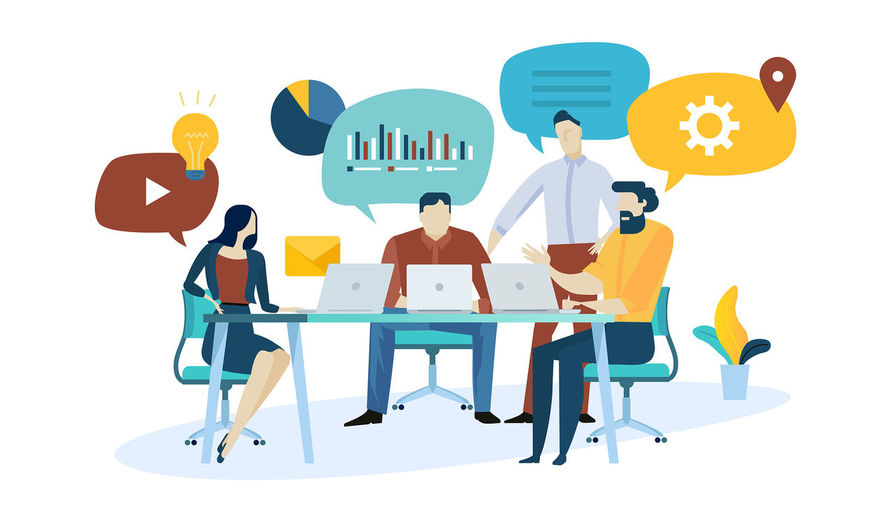
Search engine optimization (SEO) is an essential part of any digital marketing strategy and today we’re bringing you an online resource to detail the basics of on-page SEO.
Welcome to the first installment of your two-part “page” SEO guide.
What Is On-Page SEO?
On-page SEO, also known as on-site SEO, is a series of optimizations you can make within your site to get the best results/SERP rankings.
Working on your on-page SEO means improving the content, the HTML code, and tags used to create your site.
10 On-Page SEO Techniques
In on-page SEO, there are several factors you can optimize. Working your way down from the top of the webpage, here are ten on-page factors and how to optimize them.
1. URLs
URLs are the online addresses of web pages. Since they wind up in the SERP almost as often as they do browser bars, it’s always good to optimize them.
You can do this by keeping URLs and their structures easy-to-read, free of unnecessary symbols, short in length, case-sensitive, and logically organized. Try to include targeted keywords, too.
Good URL:
https://www.notrealurl.com/dolls/matryoshka-dolls
Not-so-good URL:
https://www.notrealurl.com/dolls/MaTrY0shKa?=114+096Y024-957&8
2. Title tags
Title tags are the blue underlined titles of web pages ranked in the SERP. Optimize these to improve search engine rank and visibility.
Some optimization tips include writing titles that feature targeted keywords, that utilize your brand name at the end, that incorporate numbers, and are short (no more than 60 characters), unique, and user-friendly.
Good title tag:
3 Reasons Why Food On Airplanes Still Sucks | Aero-Gourmet
Not-so-good title tag:
Blog - Aero-Gourmet - Airplane Food And Why It Is Bad
3. Meta descriptions
Meta descriptions are the descriptions that reside below title tags in the SERP. This piece of text is another way to persuade users and search engines of a page’s significance.
To optimize meta descriptions, be mindful of length (160 characters is the max), write them as relevant summaries, and incorporate calls-to-action (CTAs) and unique-value-props (UVPs) to entice a click.
Good meta description:
Did you know rocket boots will let you travel faster, can save you money, and may help the environment? Read about 5 big benefits of wearing rocket boots here.
Not-so-good meta description:
Rocket boots are an incredibly innovative new technology that allows you to fly independently of a manually operated vehicle. By using state-of-the-art government-approved turbo boosters, this out-of-this-world footwear will propel you through the skies faster than any countdown is capable of anticipating. Aside from flying, there are several benefits to having a pair of rocket boots, such as…
4. Headings
Headings (H1s) are the primary (and often largest) text on a web page. Like title tags, these should engage your new visitors and give them a sense of what your page is about.
When optimizing them, write them like a title tag and use them to introduce your content.
Good heading:
How To Make Healthy Homemade Slushies In Under 5 Minutes
Not-so-good heading:
You Likey Da Juice: Healthy Slushy Recipes At Home
5. Content
Content is the main body of text that a web page offers. Quality content, as Google’s E-A-T guidelines suggest, is not only what site visitors prefer to see but also what gets you a better SERP ranking.
Optimize for these factors by writing clear and error-free copy with the right tone. You should also enhance readability with bulleted lists, good use of white space, text modifications (think font, color, and size), and other media (like images and videos)
6. Internal linking
Internal linking is the process of linking to other pages on your website. Doing so helps users and search engine crawlers navigate your sitemap.
A few best practices for internal linking are to use brief but descriptive anchor texts (like a target phrase that describes linked content), to link to relevant pages instead of top-level pages, and to avoid overlinking.
Good internal linking:
Take a look at our latest blog post about optimizing your podcast for SEO!
Not-so-good internal linking:
Click here to see if you can optimize your podcast for SEO.
7. Images
Images are the pictures and related media (think GIFs) you may choose to display on your website. Images can decrease your page speed, which may prompt users to leave your site and your SERP rankings to plummet.
If you want to optimize your images, consider resizing or reformatting them.
8. Image alt text
Image alt text is an “alternative text” description that explains images for the visually impaired. While alt text helps this particular group of your users, it can also aid search engine crawlers when they index your website.
Alt text optimizations should include targeted keywords, be short (no longer than 125 characters), read naturally, and relate to the page’s content.

Good alt text:
alt=”Shaggy Highland bull standing in a dandelion field”
Not-so-good alt text:
alt=”Hairy cow in field”
9. Page speed
Page speed is a measure of how long it takes a page on your website to load. Running too slowly may cause users to abandon your site, a departure that will ultimately affect its SERP ranking.
With page speed, try optimizations like compressing images and files, minifying code, reducing page redirects, and developing a cache policy.
10. Mobile Optimization
Mobile optimization is a method of developing your web pages to function across all devices. Sites that aren’t optimized for both mobile and desktop run the risk of frustrating their visitors and, thanks to the popularity of mobile-first indexing, lowering their SERP rankings.
To fully optimize for these devices, consider designing a responsive, dynamic-serving, or separate mobile site, make sure its metadata is concise, and monitor page speed.
That was fun, wasn’t it? Stay tuned for part II of our guide!
-----
Take a look at our blog for more things SEO. Consider reading our how-to on incorporating data-driven content into your marketing strategy.
Contact us for more specific solutions for your digital marketing strategy.
